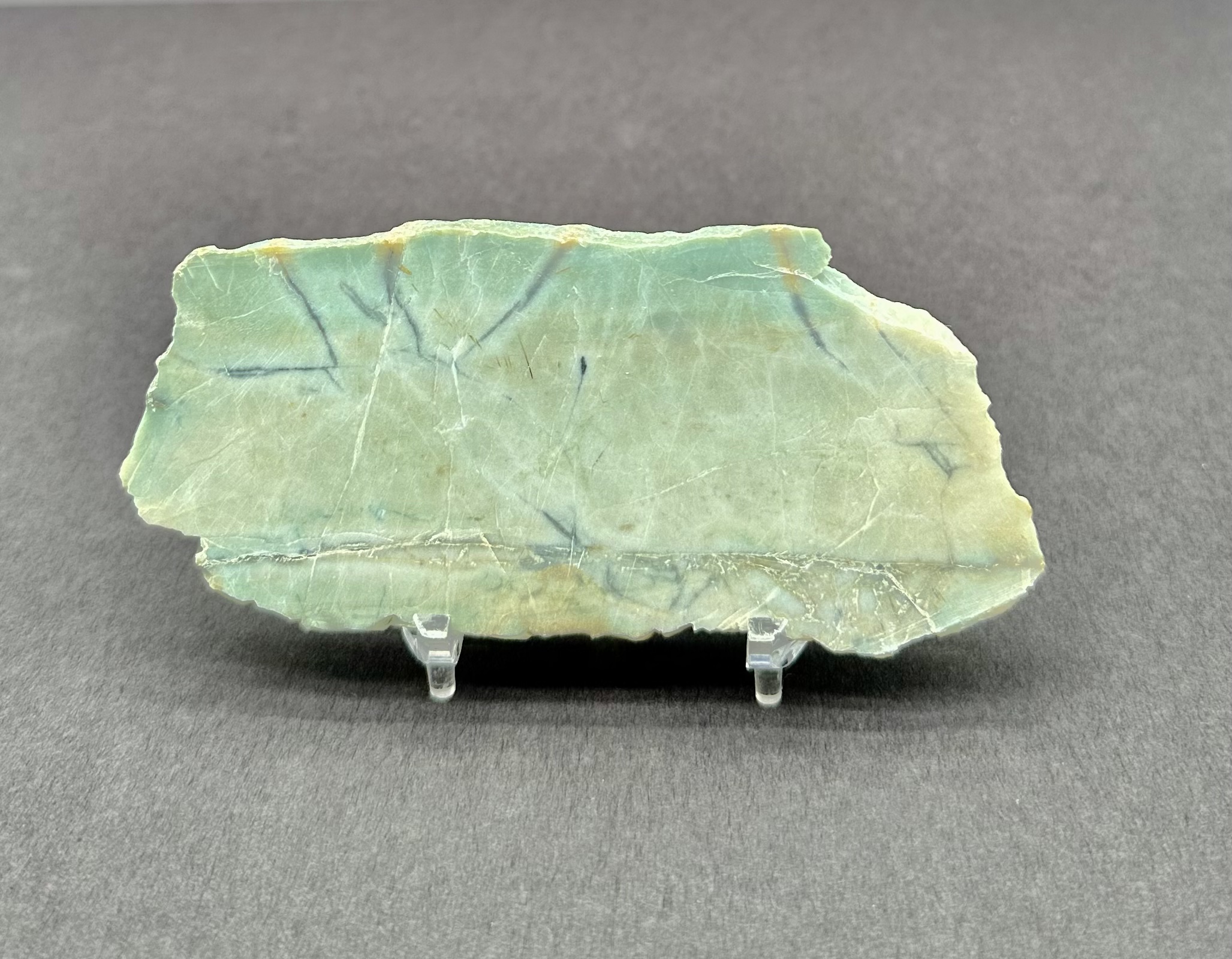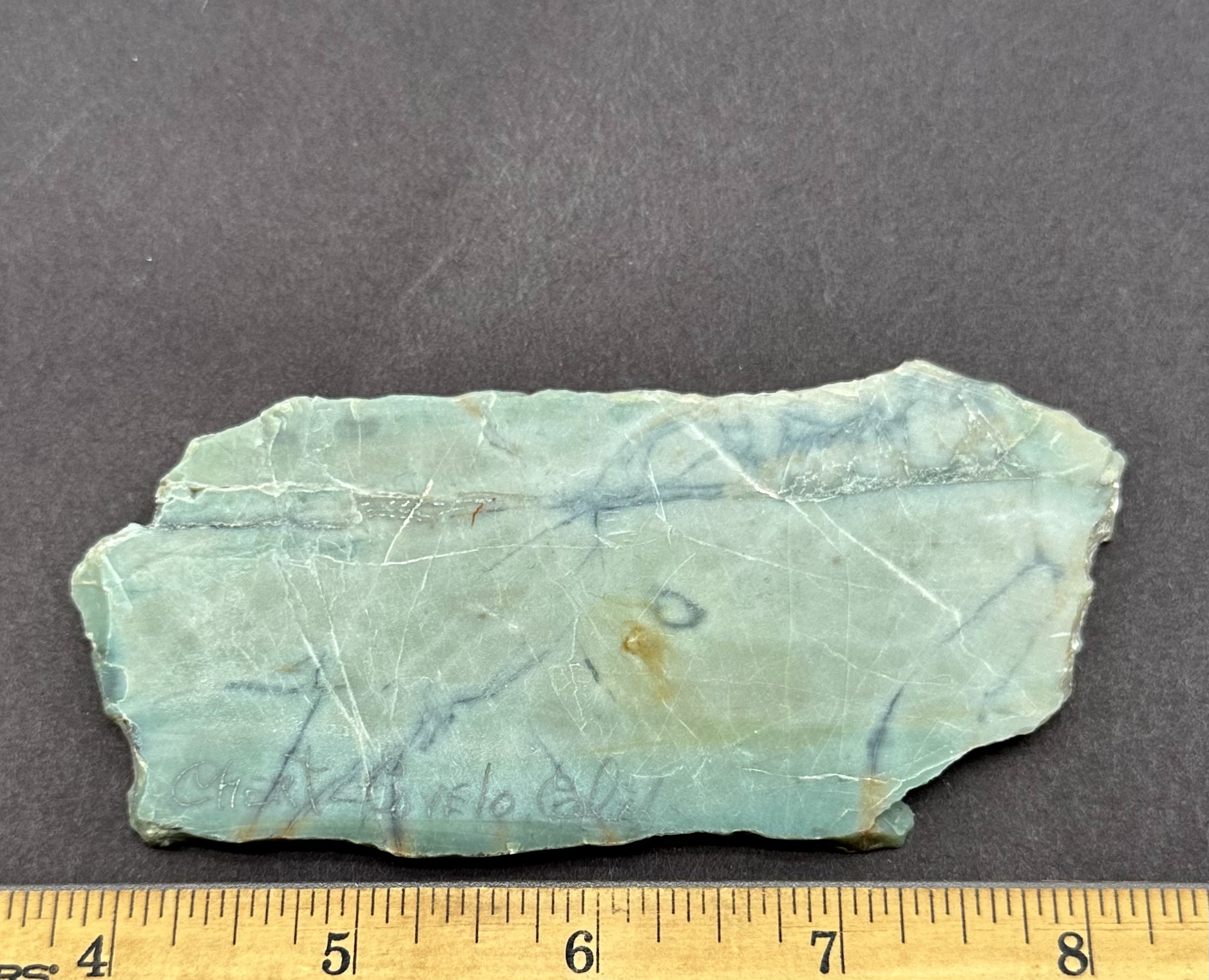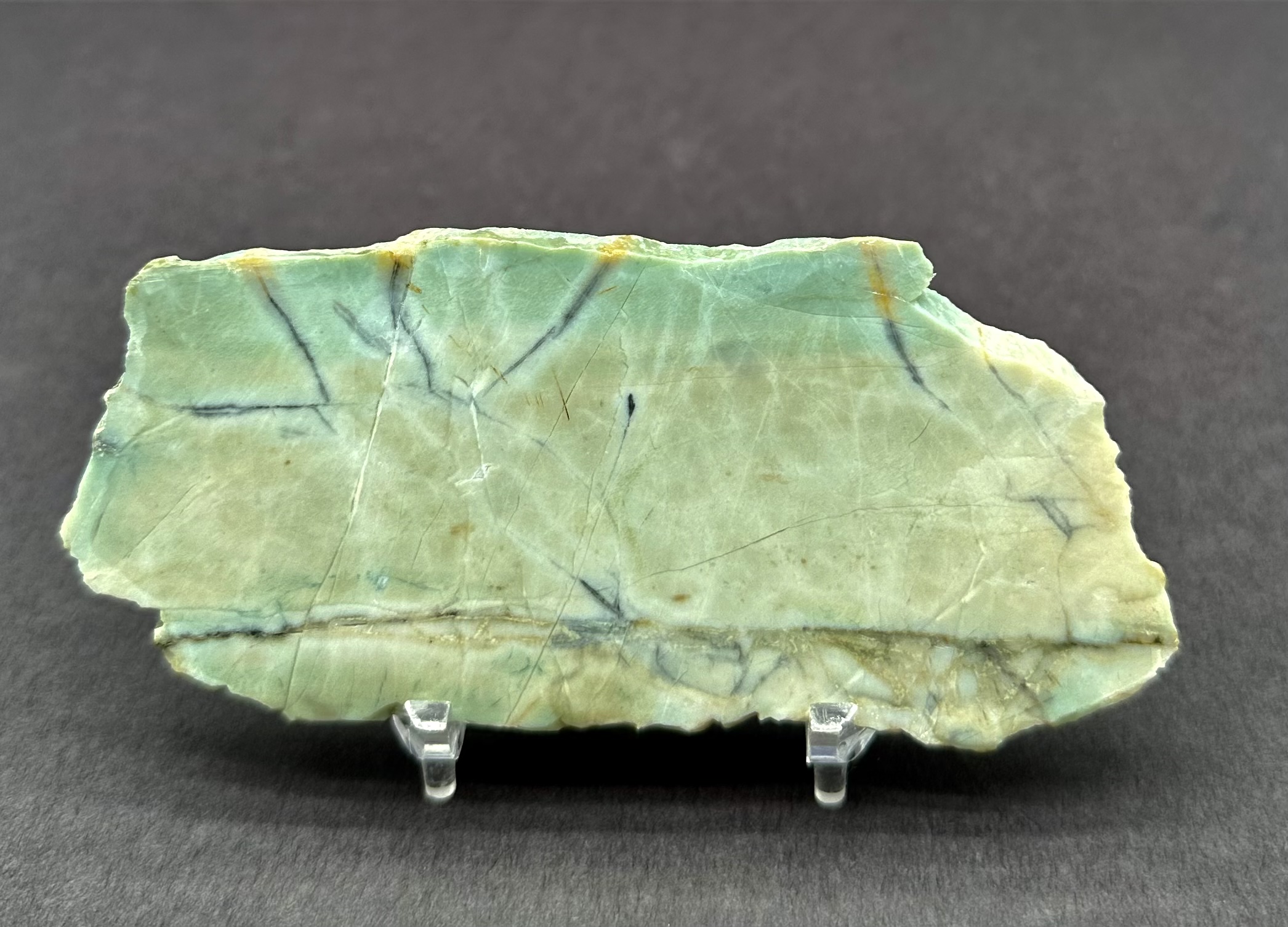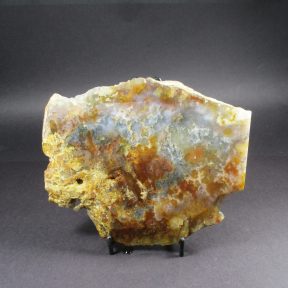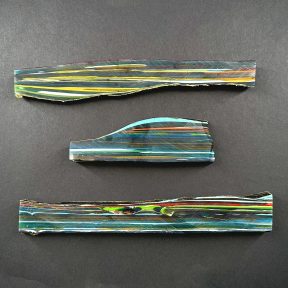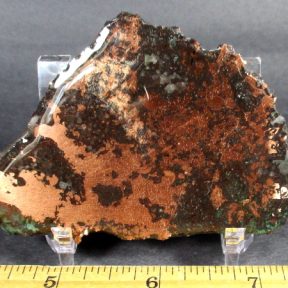Description
Chert is a hard, fine-grained sedimentary rock composed of microcrystalline or cryptocrystalline quartz,the mineral form of silicon dioxide (SiO2). Chert is characteristically of biological origin but may also occur inorganically as a chemical precipitate or a diagenetic replacement, as in petrified wood.
Chert is typically composed of the petrified remains of siliceous ooze, the biogenic sediment that covers large areas of the deep ocean floor, and which contains the silicon skeletal remains of diatoms, silicoflagellates, and radiolarians. Precambrian cherts are notable for the presence of fossil cyanobacteria. In addition to microfossils, chert occasionally contains macrofossils. However, some chert is devoid of any fossils.
Chert varies greatly in color, from white to black, but is most often found as gray, brown, grayish brown and light green to rusty red and occasionally as dark green. Its color is an expression of trace elements present in the rock. Both red and green are most often related to traces of iron in its oxidized and reduced forms, respectively.
Tools:
In prehistoric times, chert was often used as a raw material for the construction of stone tools. Like obsidian, as well as some rhyolites, felsites, quartzites, and other tool stones used in lithic reduction, chert fractures in a Hertzian cone when struck with sufficient force. This results in conchoidal fractures, a characteristic of all minerals with no cleavage planes. In this kind of fracture, a cone of force propagates through the material from the point of impact, eventually removing a full or partial cone; this result is familiar to anyone who has seen what happens to a plate-glass window when struck by a small object, such as an air gun projectile. The partial Hertzian cones produced during lithic reduction are called flakes, and exhibit features characteristic of this sort of breakage, including striking platforms, bulbs of force, and occasionally eraillures, which are small secondary flakes detached from the flake’s bulb of force.
When a chert stone is struck against an iron-bearing surface, sparks result. This makes chert an excellent tool for starting fires, and both flint and common chert were used in various types of fire-starting tools, such as tinderboxes, throughout history. A primary historic use of common chert and flint was for flintlock firearms, in which the chert striking a metal plate produces a spark that ignites a small reservoir containing black powder, discharging the firearm.
California chert:
Diatomaceous chert consists of beds and lenses of diatomite which were converted during diagenesis into dense, hard chert. Beds of marine diatomaceous chert comprising strata several hundred meters thick have been reported from sedimentary sequences such as the Miocene Monterey Formation of California and occur in rocks as old as the Cretaceous1.
California is a great state to find chert specimens. San Francisco has two great locations. You can visit Coyote Point and search for chert north of the yacht harbor or head to the outcrop only one-mile northeast of Cliff House. San Jose also has two great chert locations.
